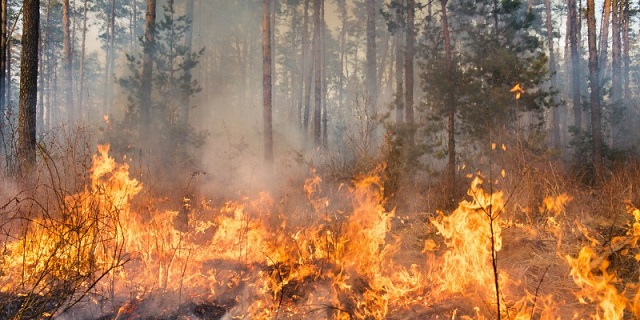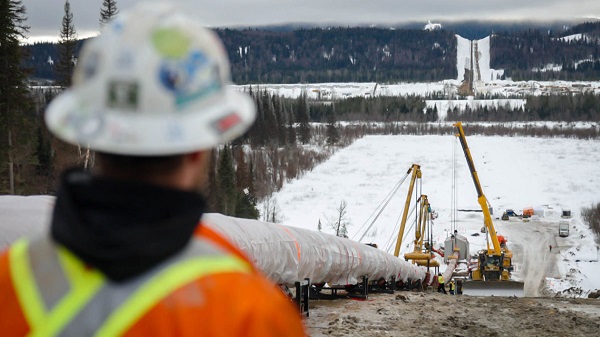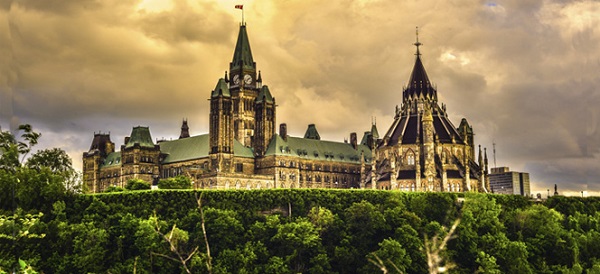Alberta
Focus on tangible policies—not political finger-pointing— to reduce fire risks

From the Fraser Institute
Was the very specific area around Jasper—not the entire forested lands of Alberta—managed aggressively enough?
With the picturesque town of Jasper badly damaged by fire, Albertans and Canadians across the country are wondering how such destruction was allowed to happen.
Much of the public debate assumes that the disaster, in some way, was human-caused or aggravated by governmental negligence or incompetence. Some argue that government policies to suppress natural wildfires, which were widely implemented across North America after the Second World War, allowed the build-up of massive amounts of fuel for potential mega-blazes. Others argue that governments have been negligent by failing to allow aggressive logging of dead trees and by using insufficient controlled burns to manage fuel loads of underbrush. Some, of course, blame climate change—specifically human-caused climate change. And yes, the climate has changed, warming about 1.2 degrees Celsius since 1850, which may contribute to a heightened risk of forest fires (although there’s no ability to attribute any single climatic event to climate change).
But focusing on these issues misses the forest for the trees and raises philosophical questions about humanity’s relationship with nature, specifically, whether or not it’s desirable—much less feasible—for humanity to think we can control nature at large scales and turn the world into a giant tame botanical garden. Further, focusing on these questions of “too much” or “too little” intervention mostly serves political interests trying to beat each other over the head about climate policies, which are at best capable of only slightly—very slightly—affecting the risk of future forest fires.
Rather, having studied environmental, health and safety policy for several decades, I believe we should focus on very different specific questions about how the fire was allowed to ravage Jasper. These questions cut through the foggier questions of how we manage nature and instead focus on how we manage human risks.
So, was the very specific area around Jasper—not the entire forested lands of Alberta—managed aggressively enough? In 2018, 350 hectares of trees around Jasper were removed. Apparently, that was not enough to protect the human-built environment. Parks Canada will have to answer that question in time.
Did the provincial and federal governments fall short in maintaining sufficient fire-fighting capabilities to protect Jasper? According to some reports, this was a significant source of failure, where the federal government, which maintains no ability to fight fires at night, failed to coordinate with Alberta’s provincial government, which does have night-fighting capabilities.
Did the town of Jasper take enough precautions to protect itself from the risk of conflagration? Are building codes in Jasper sufficiently stringent at fire-proofing human structures? Is the fuel burden within the township itself sufficiently controlled? More broadly, how much are we willing to spend to reduce risks? And how far should we aim to reduce those risks?
The answers to these questions could help produce tangible policies that may help reduce the risk of fire damage in the future.
There’s a lot of finger-pointing right now. Political point-scoring is the order of the day, particularly in the realm of climate policies. But using the Jasper fire for political ends distracts from the important questions about whether or not anybody or any level of government should try to tame nature outside of human-built environments. And about what policies will work best to protect towns like Jasper.
Author:
Alberta
Owner sells gas for 80 cents per litre to show Albertans how low prices ‘could’ be

Undoubtedly some of the motorists driving past The Whistle Stop Cafe at Mirror on Tuesday morning thought it was an April Fools prank. It wasn’t.
Chris Scott, owner of the gas station at The Whistle Stop Cafe offered a one day promotion on April 1st. Scott sold 8000 litres of regular gasoline for $0.80/ litre.
The promotion was funded by Scott and the Alberta Prosperity Project. In this video posted to his social media, Chris Scott explains why they did it.
Alberta
The beauty of economic corridors: Inside Alberta’s work to link products with new markets

From the Canadian Energy Centre
Q&A with Devin Dreeshen, Minister of Transport and Economic Corridors
CEC: How have recent developments impacted Alberta’s ability to expand trade routes and access new markets for energy and natural resources?
Dreeshen: With the U.S. trade dispute going on right now, it’s great to see that other provinces and the federal government are taking an interest in our east, west and northern trade routes, something that we in Alberta have been advocating for a long time.
We signed agreements with Saskatchewan and Manitoba to have an economic corridor to stretch across the prairies, as well as a recent agreement with the Northwest Territories to go north. With the leadership of Premier Danielle Smith, she’s been working on a BC, prairie and three northern territories economic corridor agreement with pretty much the entire western and northern block of Canada.
There has been a tremendous amount of work trying to get Alberta products to market and to make sure we can build big projects in Canada again.
CEC: Which infrastructure projects, whether pipeline, rail or port expansions, do you see as the most viable for improving Alberta’s global market access?
Dreeshen: We look at everything. Obviously, pipelines are the safest way to transport oil and gas, but also rail is part of the mix of getting over four million barrels per day to markets around the world.
The beauty of economic corridors is that it’s a swath of land that can have any type of utility in it, whether it be a roadway, railway, pipeline or a utility line. When you have all the environmental permits that are approved in a timely manner, and you have that designated swath of land, it politically de-risks any type of project.
CEC: A key focus of your ministry has been expanding trade corridors, including an agreement with Saskatchewan and Manitoba to explore access to Hudson’s Bay. Is there any interest from industry in developing this corridor further?
Dreeshen: There’s been lots of talk [about] Hudson Bay, a trade corridor with rail and port access. We’ve seen some improvements to go to Churchill, but also an interest in the Nelson River.
We’re starting to see more confidence in the private sector and industry wanting to build these projects. It’s great that governments can get together and work on a common goal to build things here in Canada.
CEC: What is your vision for Alberta’s future as a leader in global trade, and how do economic corridors fit into that strategy?
Dreeshen: Premier Smith has talked about C-69 being repealed by the federal government [and] the reversal of the West Coast tanker ban, which targets Alberta energy going west out of the Pacific.
There’s a lot of work that needs to be done on the federal side. Alberta has been doing a lot of the heavy lifting when it comes to economic corridors.
We’ve asked the federal government if they could develop an economic corridor agency. We want to make sure that the federal government can come to the table, work with provinces [and] work with First Nations across this country to make sure that we can see these projects being built again here in Canada.
-

 2025 Federal Election2 days ago
2025 Federal Election2 days agoJoe Tay Says He Contacted RCMP for Protection, Demands Carney Fire MP Over “Bounty” Remark
-

 2025 Federal Election2 days ago
2025 Federal Election2 days agoHong Kong-Canadian Groups Demand PM Carney Drop Liberal Candidate Over “Bounty” Remark Supporting CCP Repression
-

 2025 Federal Election2 days ago
2025 Federal Election2 days agoPoilievre To Create ‘Canada First’ National Energy Corridor
-

 2025 Federal Election2 days ago
2025 Federal Election2 days agoAlcohol tax and MP pay hike tomorrow (April 1)
-

 2025 Federal Election2 days ago
2025 Federal Election2 days agoChina Election Interference – Parties Received Security Briefing Days Ago as SITE Monitors Threats to Conservative Candidate Joe Tay
-

 2025 Federal Election2 days ago
2025 Federal Election2 days agoFixing Canada’s immigration system should be next government’s top priority
-

 2025 Federal Election1 day ago
2025 Federal Election1 day agoPoilievre, Conservatives receive election endorsement from large Canadian trade union
-

 Bruce Dowbiggin2 days ago
Bruce Dowbiggin2 days agoAre the Jays Signing Or Declining? Only Vladdy & Bo Know For Sure







